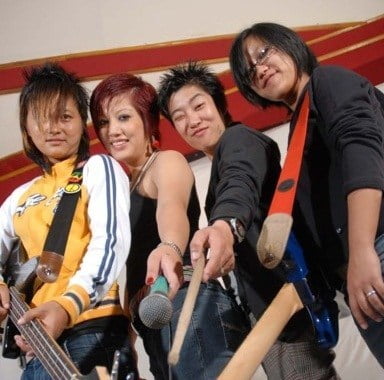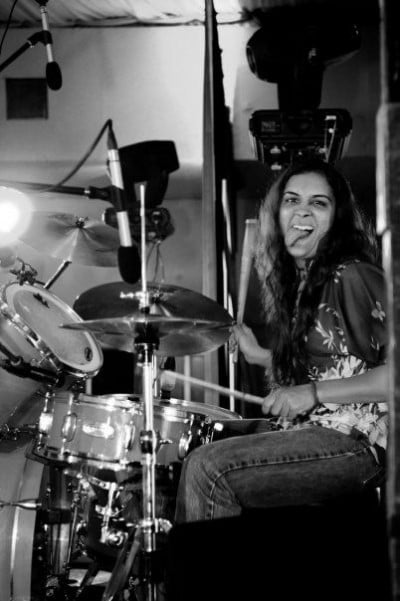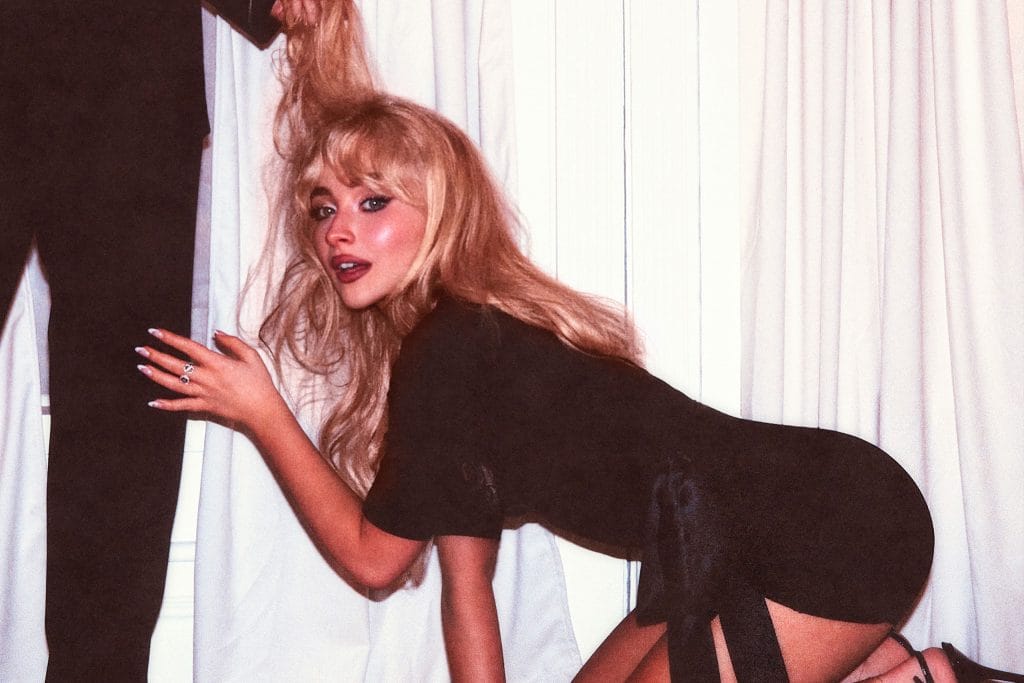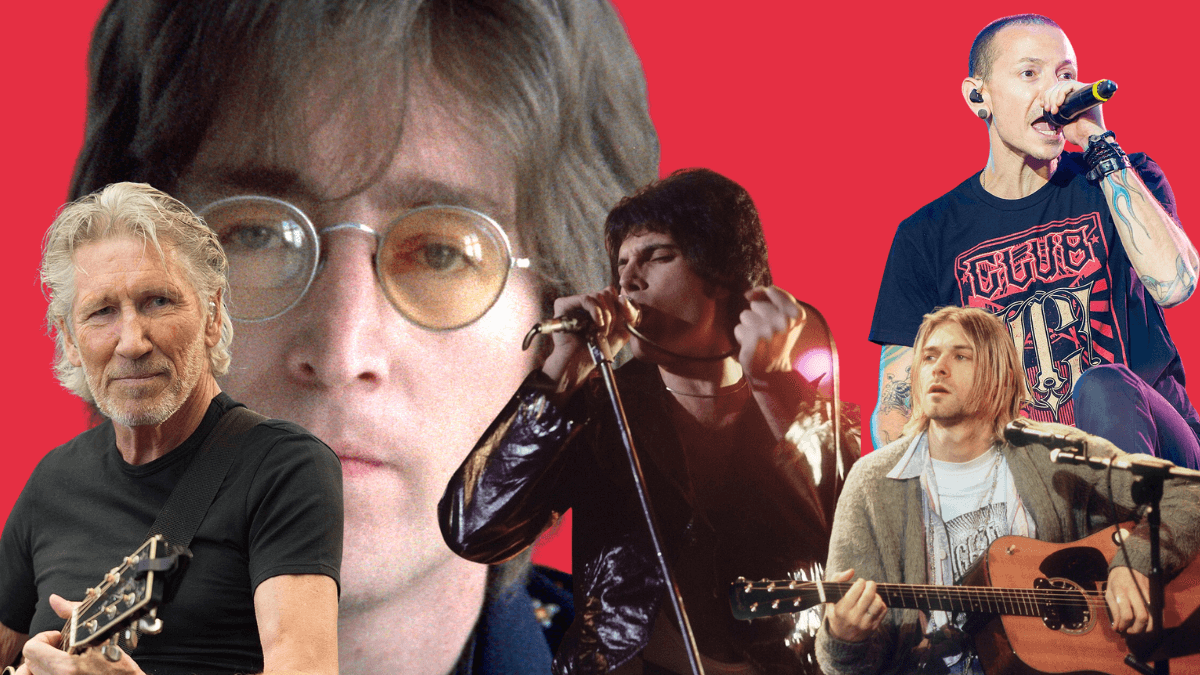Resistances have always met music—be it anti-war music, ‘slave songs’, or political Hip Hop. Music has been an important tool of feminist expression across generations as well. As a woman musician, I am interested in knowing more about the feminist journey of popular and counter-culture music in India. So, I began exploring different genres through a feminist lens. Mainstream music like Bollywood and Pop, and counter-culture genres like Hard Rock, Metal, and political Hip Hop have an oft-untold glorious feminist story.
Popular Music’s Tryst with Feminism
A remarkable piece of early feminist expression in Bollywood music is the song ‘Aaj Phir Jeene Ki Tamanna Hai‘ sung by Lata Mangeshkar as part of the 1965 film, Guide. Picturised on Waheeda Rehman, the song is about a woman’s desire to break barriers, have her taste of freedom, and live on her own terms. Ever since, Bollywood and Hindi Pop presented a multitude of songs with messages of women’s freedom that shone, amidst all the sexist music and “item” songs.
The life and work of Hindustani Classical and Indian Pop singer Shubha Mudgal, who is also vocal about gender discrimination in the music industry, is worth celebrating. Mudgal’s ‘Mann Ke Manjeere‘ is no less than a feminist Pop anthem of the early 2000s. It is a song of reassurance—a woman beginning to believe in herself again and finding infinite possibilities. The song features in Mann Ke Manjeere: An Album of Women’s Dreams as part of the human rights organisation Breakthrough India’s Mann Ke Manjeere Campaign.
In the early 2000s, Viva!, the all-women Pop group, gained massive popularity! The five vocalists sang ‘Hum Naye Geet Sunaye‘ as messengers of the modern youth, ‘Jaago Zara‘, a wake-up call to society, and ‘Jahaan Ho Pyar Ka Mausam‘, a song about peace, love, and acceptance. Songs like ‘Baadal Pe Paao Hai‘ by Hema Sardesai featured in the film Chak De! India (2007), and ‘Suno Suno Meri Awaaz‘ (2010) by Anandmurti Gurumaa stand out for their themes of women’s courage to dream and sisterhood.
The “Counter-Culture” Statement
Women musicians not only wrote the feminist history of popular music but also questioned socio-political norms through their ideologies and musical narratives. Owing to the undeniable male-domination in non-mainstream genres like Hard Rock, Metal, Punk, and political Hip Hop, the presence of women musicians in these genres is a counter-culture feminist statement in itself!
Women’s underrepresentation in a multitude of areas, such as playing instruments, sound engineering, and music concert organizing, speaks of the long way these spaces still have to go in terms of inclusion.
In 1962, Anupa Nathaniel and Shalini Gupta, first-year students of Miranda House, Delhi, formed Mad Hatter, arguably the first all-women rock band in India. Ever since, the role of women in music hasn’t been restricted to singing songs composed by men. Women’s work in songwriting and composing started gaining more visibility. All-women bands from the North-East have been remarkably contributing to the feminist chronicles of music since decades. The Nagaland band Tetseo Sisters formed in 1994 did memorable work in incorporating tribal folk elements in their Fusion and Pop music. All-women Rock bands such as Afflatus from Meghalaya and The Vinyl Records comprising of members from Arunachal Pradesh and Assam set the momentum for a new wave of all-women bands.


Image source: Vibes Northeast

Image source: Conversations with Bianca
A young artist, Ginni Mahi, is known for her groundbreaking work in the “Chamar Pop” genre. Embracing the principles of Dr. Ambedkar, she sings about Dalit socio-political realities through a fierce mix of Punjabi Folk, Hip Hop, and Rap. The anti-casteism themes in her music sparked active discourse on social media when her songs ‘Danger Chamar‘ and ‘Fan Baba Sahib Di‘ went viral.
Reclaiming Spaces
Even in 2019, patriarchy and misogyny are significantly visible in both popular and counter-culture music industries and communities. Women’s underrepresentation in a multitude of areas, such as playing instruments, sound engineering, and music concert organizing, speaks of the long way these spaces still have to go in terms of inclusion.
Despite growing acceptance and visibility, women have time and again held the popular music industry and counter-culture scenes accountable for their rampant misogyny, objectification, and exclusionary politics. Multiple women took to social media to hold perpetrators in the Indie, Rock, and Metal scenes accountable for sexual harassment.
The gender ratio is more concerning in “underground” genres like Metal, which are supposed to challenge the system and the status quo. There are only few women playing “underground” genres in India. Yasmin Claire Kazi is well-known in Metal circles for her drumming in the Death/Technical Thrash Metal band Myndsnare. Yasmin made history in the Indian “underground” in the early 2000s, a time when there were perhaps no other women playing drums in Metal.

Image source: Tom Tom Mag
Also read: Gender Stereotypes Based On The Music Playlist
Indian women have also begun reclaiming their spaces in sound engineering although it is still largely considered a “man’s job”. Srinidhi Venkatesh, best known for her work with A.R. Rahman, is making her impact through her sound engineering projects. In the past few years, women artists began increasingly reclaiming online spaces as well. While Sona Mohapatra called out sexism in the industry, Hard Kaur fearlessly spoke about the excesses of the right wing in India and issues like gender pay gap.
Do “Scenes” See Us?
We need to talk about women’s resistance(s) to dismantle the patriarchal structures in music. Despite growing acceptance and visibility, women have time and again held the popular music industry and counter-culture scenes accountable for their rampant misogyny, objectification, and exclusionary politics. Multiple women took to social media to hold perpetrators in the Indie, Rock, and Metal scenes accountable for sexual harassment. Lack of solidarity, cyber bullying, and victim-blaming followed. When the misogynistic and hostile attitudes of music scenes towards women become prominent during incidents like these, one can easily locate the reasons for the stark gender disparity in these scenes, even in 2019. Counter-culture scenes are in fact often complicit in furthering cultures they claim to be fighting, which leads us to question, “Do our “scenes” really see us?”
Also read: Are You Indian? This Rapper From Odisha Talks About Racism In Music Video
Music reflects ideologies, societal attitudes, and politics. We must stop tip toeing around the fact that music communities and industries exist in the patriarchal society and often end up perpetuating misogyny. It is time to acknowledge and amplify the splendid feminist works and resistances of women in music. It is time to ensure inclusive and safe spaces for women artists, fans, and listeners. Hear us! See us!
Featured Image Source: Desi Today Magazine
About the author(s)
Debarati is a queer feminist lawyer and musician always learning to be pro-intersectional in her politics.




